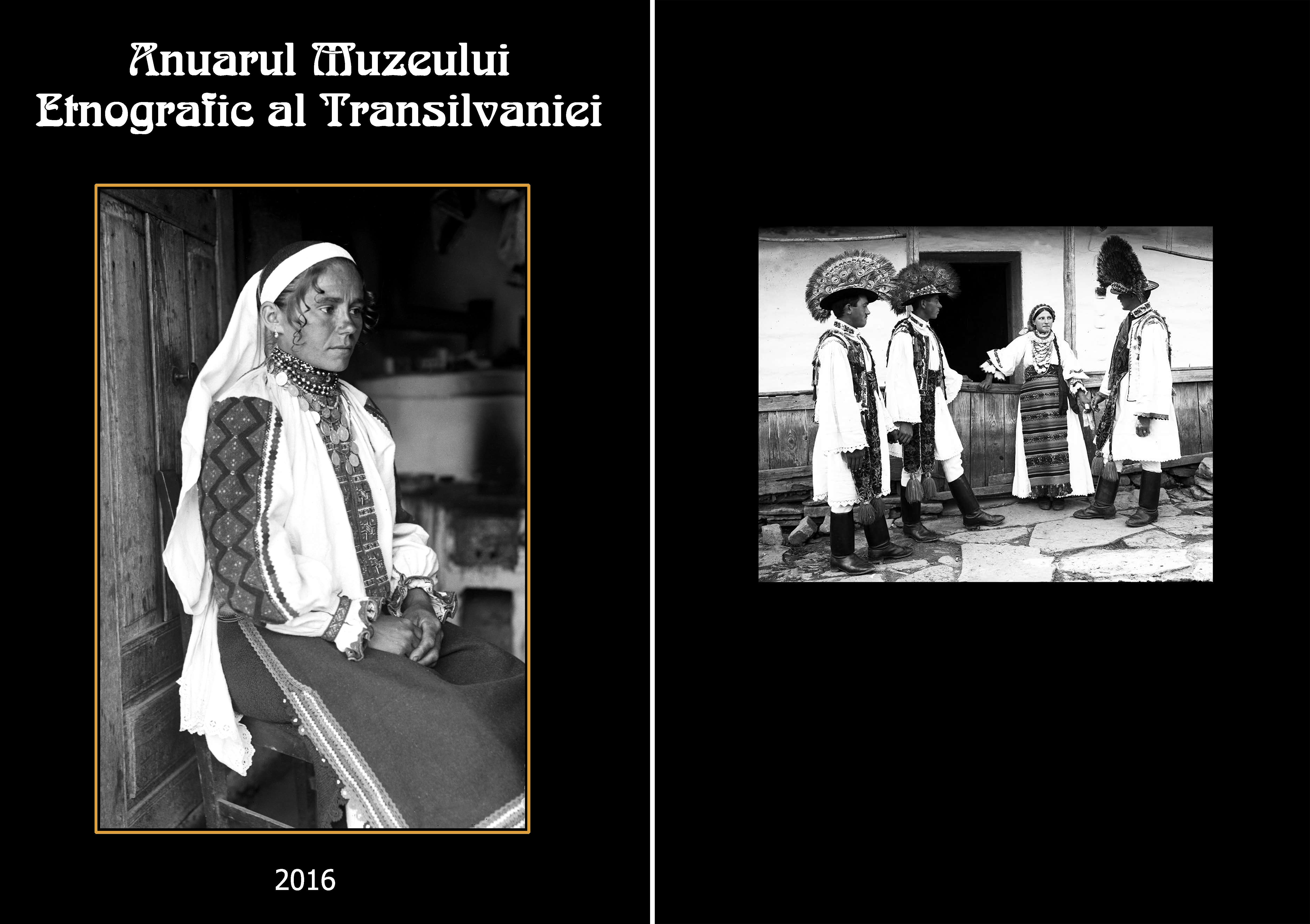DIN ISTORIA MUZEOGRAFIEI ETNOGRAFICE ROMÂNEȘTI
(Expoziția permanentă a Muzeului Etnografic al Transilvaniei din 1955)
History of the Romanian Ethnographic Museography
(Permanent Exhibition of the Transylvanian Museum of Ethnography in 1955)
Author(s): Ioan Toșa, Tudor SălăgeanSubject(s): History, Fine Arts / Performing Arts, Geography, Regional studies, Ethnohistory
Published by: MUZEUL ETNOGRAFIC AL TRANSILVANIEI
Keywords: exhibition; museography; Ethnographical Park; Transylvanian Museum of Ethnography; illustrated guide
Summary/Abstract: The authors present the less known activity held at the Transylvanian Museum of Ethnography from 1937 to 1957 towards: Research and Conservation of the Folk Cultural Heritage; Development of a network of ethnographic museums; Establishment of circles of ethnographic researches; Capitalisation through exhibitions and publications. For the research and preservation of the folk cultural heritage there were organised research and acquisition campaigns and there were made questionnaires for finding the buildings for the National park which unfortunately could not be completed because of the war, and after the war because of the political changes. The preservation and capitalisation of the folk heritage could be done successfully only by institutions and qualified individuals, so that the Museum intervened with the bodies of central and local authorities for the establishment of some museums or ethnographic sections in Iasi, Cernauti, Timisoara and Craiova and by ensuring qualified staff trained within the Department and Seminar of ethnography and folklore. An intense activity was made during 1939-1946 towards organizing Circles of ethnographic researches in the main cultural centres of the country, so that their union to re-establish the Romanian Ethnographic Society. The opening of the permanent exhibition in the building of Bărnuţiu Garden represented a very important moment for the Romanian museography by the implications it has had on the followings: the exhibition furniture, the theme and the exposure system, which represented a model for efforts of some institutions to present the collections of objects which they held between 1937- 1940. The authors present then some aspects of Museum work during the refuge in Sibiu (1940-1945) and the difficulties for restoration of the building in the Park in order to organize the Exhibition following the model of the one in 1937. The change of political regime in 1947 coincided with the forced retirement of Professor R. Vuia. There are presented the attempts to continue in 1948-1950 the projects started after returning from refugee interrupted by the change of the director (May 1950) and of the staff (1951). In November 1951, by the Decision of the Committee for Higher Education, the Museum was passed to the Committee for Cultural Settlements, receiving the name "Historical- Ethnographic Museum of Cluj Region". In 1951, the Museum staff have drawn up a Directory for the organization of the new museum exhibition, which the authors, taking into account the fact that this is the only document on how a permanent exhibition theme is made, publishes in its entirety. The theme was sent to the Committee for Cultural Settlements that rejected and outlined the directions the exhibition named "The issue of living and evolution of the society beginning with human formation until nowadays " to be made. The intense discussions regarding the exhibition theme were held in 1953, after which it was established the thematic plan of the exhibition, which was opened on 24th of May 1955, for which it was made an illustrated guide that was to be printed in 1957.
Journal: Anuarul Muzeului Etnografic al Transilvaniei
- Issue Year: 2016
- Issue No: 1
- Page Range: 166-238
- Page Count: 73
- Language: Romanian
- Content File-PDF

